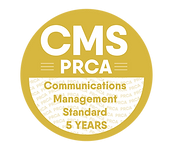General Election Guide & Timetable
04 May 2017 - by Denise McAnenaThe House of Commons has now dissolved, and election campaigns have begun in earnest. Here is our guide on what to watch out for in coming weeks.
Registration: Candidates and Voters
With the countdown to 8 June's general election well and truly on, political parties are naming candidates in advance of the 11 May nomination deadline. A full list of candidates is expected to be made available on Friday 12 May.
Once a candidate has submitted their nomination papers, they are subject to the Electoral Commission’s financial regulations on campaigning.
The deadline for voter registration is 22 May. Applications for postal votes must register by 5pm on Tuesday 23 May, with the deadline for proxy votes at 5pm on Wednesday 31 May.
Voters can check if they are registered by calling the Electoral Office for Northern Ireland on 0800 4320 712 or by emailing info@eoni.org.uk.
The Campaign
This general election will be the fourth time in the last 13 months that voters in Northern Ireland have gone to the polls.
In the March 2017 Assembly election, turnout was 64.8 per cent, an increase of 10 per cent from the previous Assembly contest, and a slight increase on the EU referendum turnout from last June. Parties will be keen to maintain this voter engagement, and prevent ‘election fatigue’ setting in.
LucidTalk has announced a series of three polls covering predictions for each of the NI Westminster constituencies that are available from 1 May, 18 May, and 4 June.
The Election and Beyond
Election day starts at 7am and finishes at 10pm, on Thursday 8 June. The first-past-the-post voting system is used to elect MPs to the House of Commons. Under first-past-the-post, voters mark their ballot paper with an X next to their preferred candidate. The candidate that receives the most votes is deemed elected.
Voters will need to prove their identity by producing a passport, driving licence or electoral identity card.
Polling stations will display up-to-date turnout numbers periodically throughout the day, which should serve as a good indication of final turnout.
Following the election, the party that wins the most seats in the House of Commons will form the new government, and its leader will become Prime Minister. If there is a ‘hung parliament’ — where no party wins a majority of the seats — then the largest party may form a minority government or a coalition government with another party (or parties).
The newly elected MPs will be sworn in and elect a new speaker of the house on 13 June.
A week later, on 19 June, the Queen will give a speech at the state opening of the new parliamentary session.
And so it begins again!








